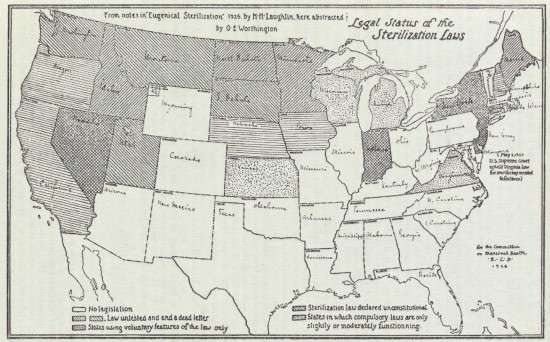Fear the Reaper by David Simms
 Ten percent. That’s the number of the population deemed unfit to belong. In Fear the Reaper (Macabre Ink) by David Simms, this frightening novel recounts the American Eugenics Movement in the 1930s, a dark secret in our country’s history.
Ten percent. That’s the number of the population deemed unfit to belong. In Fear the Reaper (Macabre Ink) by David Simms, this frightening novel recounts the American Eugenics Movement in the 1930s, a dark secret in our country’s history.
Psychologist Sam Taylor has developed a test to identify people with mental illness for whom therapy would help them lead more productive lives. After losing his wife and infant son, he agrees to join Dr. Joseph Dejarnette at Western Valley Hospital in rural Virginia to implement his test. Sam’s only intention is to “help those who needed the treatment they sought to improve society.” He never imagines it will be used to weed out people who The Society believes are unfit—people with mental and physical challenges, those who aren’t from Scandinavian descent, and the “mud people” who pollute and dilute the ideal Anglo-American race.
Once Sam settles his mother and deaf brother in the town of Augusta and begins patient treatment, he quickly discovers the stunning truth. The hospital operates under the belief that “defectives only breed defectives,” and is eliminating the threat to a perfect American population. Some patients are sterilized, some are lobotomized. Others just disappear. The Society wants “humanity to rid itself of its viruses, diseases, blemishes, and whatever else […] was killing us.”
The citizens of Augusta fear anyone wearing a suit and fedora—the hallmarks of the government men who arrest the unfit. Monsters, the people call them. “Ones that wear suits and stalk the streets at night.” And what of the train that stops inside the hospital compound daily? Where are its passengers? Sam and his neighbor Gene, a biracial immigrant, vow to fight the horror spreading across the United States. But rich and powerful men—the leaders of industry and politics—fund The Movement. Can Sam and Gene stop the inhumanity that has overtaken Western Valley Hospital and the country and still keep their families safe?
What is scary as hell about this novel is that the American Eugenics Movement was real. During the early 20th century, The Movement formed groups such as The Race Betterment Foundation, The Euthanasia Society of America, the American Breeder’s Association, and the Eugenics Records Office. Funded by a society of American millionaires, powerful leaders of industry, and public officials, the program’s goal was to eliminate the most unfit 10 percent of the population. The New York Times even published articles to gain the support of the American people and make The Movement mainstream.
Across America, The Society earmarked people who poisoned the American population—those withdisabilities, people with lower intelligence, criminals, and even those whose only crime was poverty. Because they believed these characteristics were passed from one generation to the next, sterilization and euthanasia were logical remedies.

Horrifyingly, The Movement was also a model for Hitler’s Aryanization program.
Fear the Reaper brings to life this disturbing era in American society, one I didn’t know existed. As the world learned from Nazi Germany, “when a man plays God, the glint of the devil shines in his eyes.”
We all know of Hitler’s appalling acts, but that was far away, across an ocean. In this novel, Simms gives us evidence that the same can happen on American soil—it already did. This book hammers home a reminder: Americans must vigilantly protect every person’s right to equality and freedom. We must always Fear the Reaper.
Fear the Reaper is now available to purchase.
Buy this Book!
Amazon




